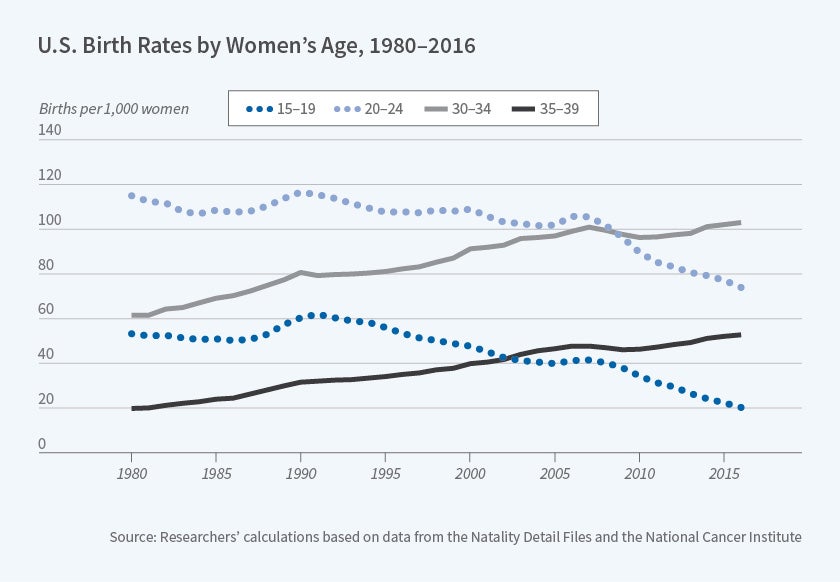Unintended Births and Fertility Trends in the US since 1991
One-third of the overall decline in fertility between 2007 and 2016 is attributable to a decline in the number of unintended births.
Over the last ten years, the U.S. fertility rate declined by 13 percent, to the lowest level in the nation's history. The teen birth rate fell from its peak of 62 births per 1,000 women aged 15 to 19 in 1991 to roughly 19 births per 1,000 women in 2017 — a 69 percent decline. Conversely, the birth rate for women over 30 has risen steadily since 1980, so much so that "[f]or the first time in U.S. history, the age group with the highest birth rate in 2016 was women 30 to 34," Kasey Buckles, Melanie Guldi, and Lucie Schmidt report.
"...[M]uch of the fertility decline of the last ten years is driven by declines among women whose births were likely to be unintended, and specifically by births to young women," they conclude in Fertility Trends in the United States, 1980–2017: The Role of Unintended Births (NBER Working Paper 25521). To investigate the role of unintended births in explaining fertility trends, the researchers develop a statistical model to predict whether a birth was unintended, using data from the National Survey of Family Growth and the National Center for Health Statistics' Natality Detail Files. The study classifies a birth as unintended if the mother reports that the child was unwanted or if she reports that she wanted to have children but not for two years or more. With this definition, unintended births peaked in 2005–06 at 35.6 percent of all births. Since then, that fraction has dropped steadily, to 29.5 percent between 2013 and 2015.
The researchers conclude that the decline in unintended births between 2007 and 2016 explains about a third of the overall drop in fertility over the period. They find that this decline is almost entirely due to changes in the age distribution of women giving birth. The researchers also examine trends in birth rates by marital status and find that the rate for unmarried women has started to decline while that for married women has increased. The drop in childbearing by unmarried women over the last decade is driven by younger cohorts: Women born in the late 1980s and early 1990s had fewer nonmarital births by age 25 than their predecessors.
More than two-thirds of unintended births in 2010 were paid for by public insurance programs. The study results suggest that if the number of unintended births in 2016 had been the same as the number in 2007, federal and state governments would have spent $2.4 billion more on delivery related medical costs.
— Alex Verkhivker



